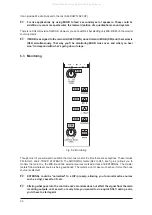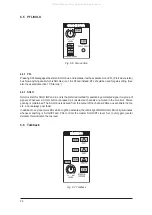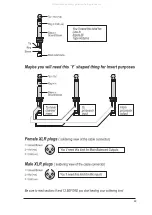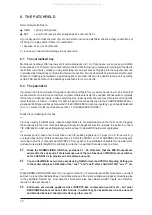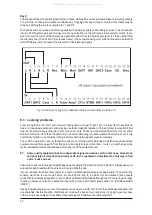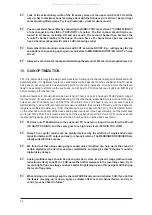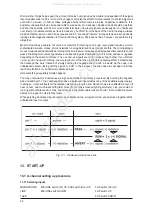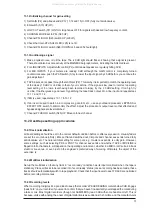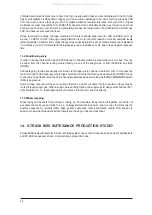
34
+
Look at the extraordinary width of the frequency sweep of the upper mid EQ -300 Hz all the
way up. Set to maximum boost and play about with the frequency in real time. I bet youII get
some stunning filter sweeps. Try it on drumloops great for dance music!
+
You can cascade channel EQs by connecting the DIRECT OUT (see section 7 CONNECTIONS)
of one channel into the LINE or TAPE INPUT of another. The first channel should first be un-
routed to all buses, including L/R and aux sends. The second channel then becomes the
control channel, routing to the buses. You now have a 23 channel mixer, but one channel
has a 4-band (semi)-parametric plus 30 dB of shelving swing!
+
Remember EQ contouring can be done with CUT as well as BOOST. E.g.: cutting away the top
and bottom, then pushing up the gain is equivalent to MID-RANGE BOOST! EQ is NOT a 1-way
street!
+
Always re-set a channels input gain after altering the amount of EQ cut or boost applied (see 3.3).
10. GAIN OPTIMIZATION
PFL (Pre-Fader-Listening) is the way to set a desk level. Setting up the channel input gain is discussed in the
essential section 13. Optimum master aux send levels will be dependent on the sensitivity of the FX device
being driven, but unity gain is a useful starting point. As the mix progresses, more and more channels are
likely to be sending to effects via the aux buses, and its best to PFL all sends (aux, subgroup, MIX-B) just
before setting up for the final mix.
Outboard reverbs etc. should all be made to work hard. Theres no point in having an 85 dB dynamic range if
the input meter of your reverb is barely flickering. On the other hand, digital distortion is not one of the nicer
noises around. Fortunately you can SOLO the FX returns. Here youll have to rely on your ears to detect
digital distortion, since different outboard processors calibrate their meters differently, and their dynamic
range is not sufficient to allow, say, 15 dB of headroom (as is the case with DAT etc.). The PFL/SOLO meter,
on the other hand, looks only at the desks analog aux input level, if you hear distortion, but the meter says
youre just hitting 0 dB, then it must be coming from the aux send amp or the FX unit. If PFL on the aux send
reveals nothing amiss, turn down the input on the FX unit, and turn up the desks aux return.
+
99 times out of 100 distortion in the aux send > FX > aux return loop will come from the FX unit
(FX GAIN TOO HIGH), and the same goes for a high noise level (FX GAIN TOO LOW).
+
Noisy FX (or synth) returns can be greatly improved by the addition of single-ended noise
reduction between FX output and aux (or channel) returns. The BEHRINGER DENOISERS are
ideally suited for this purpose.
+
We found out that using analog single ended noise reduction can help warm the sound of
certain digital reverbs which sound too cold/metallic, and also give that Echoplex sound to
digital delay decays.
+
Analog multitrack tape should be driven quite hard, since its dynamic range (without noise
reduction) is likely to be 20 to 30 dB worse than other elements in the recording chain. Try to
record bright. You can always mix back duller. Brightening up an off-tape signal will bring up
the level of tape noise.
+
When mixing or recording, keep the channel FADER levels around or below 0 dB. If you do find
the faders creeping up or down, apply a suitable offset over all channel faders, and try to
control your bad habit in future!
All manuals and user guides at all-guides.com
Содержание EURODESK MX9000 User's
Страница 18: ...18 Fig 6 2 Stereo aux returns All manuals and user guides at all guides com...
Страница 29: ...29 All manuals and user guides at all guides com...
Страница 55: ...All manuals and user guides at all guides com...
Страница 56: ...All manuals and user guides at all guides com a l l g u i d e s c o m...
Страница 57: ...All manuals and user guides at all guides com...

